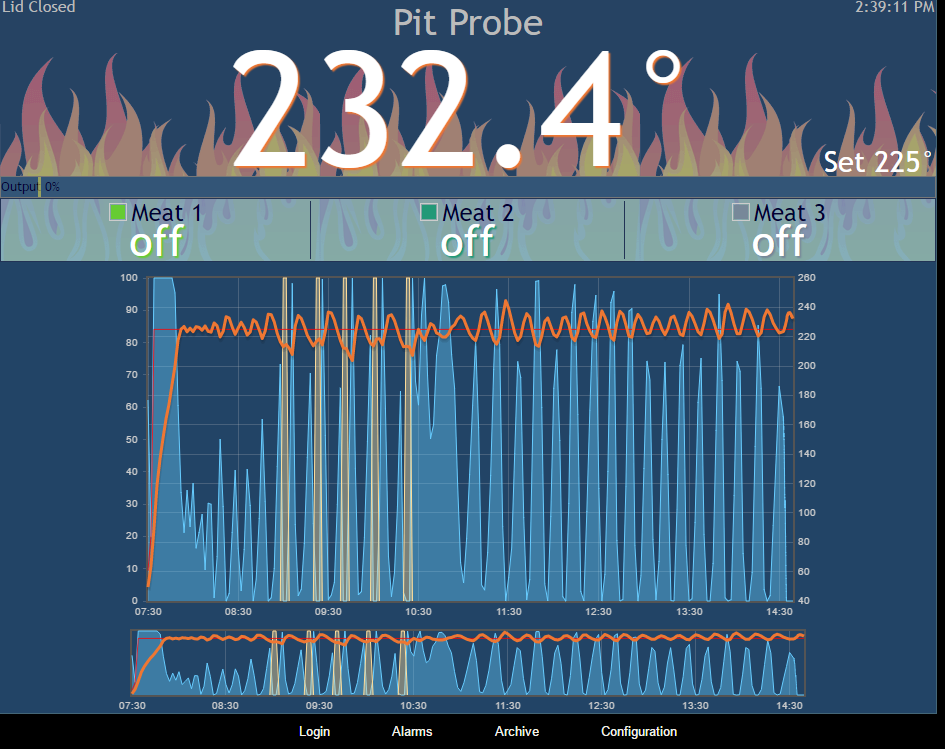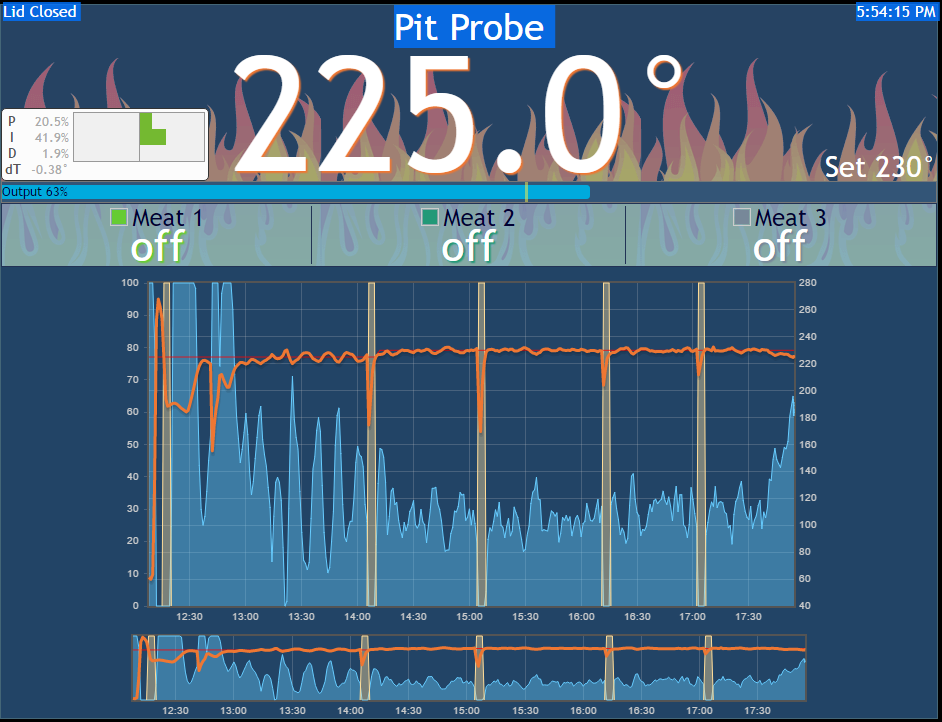Here is a shot of my first test run. This is on a homemade UDS with HM 4.3 and RD3. The RD3 in using a 1" inlet. No other inlets are open aside from the 2" outlet on top of the UDS.
Temp seems to waver over about 10-15 degrees. I started out with default PID settings. At about 9am I changed the "fan on above" to 99% to simulate fan on at 100% only as per a post or two I read. That seemed to cause some strange things to happen. Changed it back to default at 10:30.
At 11am I changed PID to 7, 0.01, 4 as per another post but it didn't seem to change much.
My UDS has always been a fickle thing but are there any suggestions for a smoother, more stable temp?
Thanks
Dave

Temp seems to waver over about 10-15 degrees. I started out with default PID settings. At about 9am I changed the "fan on above" to 99% to simulate fan on at 100% only as per a post or two I read. That seemed to cause some strange things to happen. Changed it back to default at 10:30.
At 11am I changed PID to 7, 0.01, 4 as per another post but it didn't seem to change much.
My UDS has always been a fickle thing but are there any suggestions for a smoother, more stable temp?
Thanks
Dave



